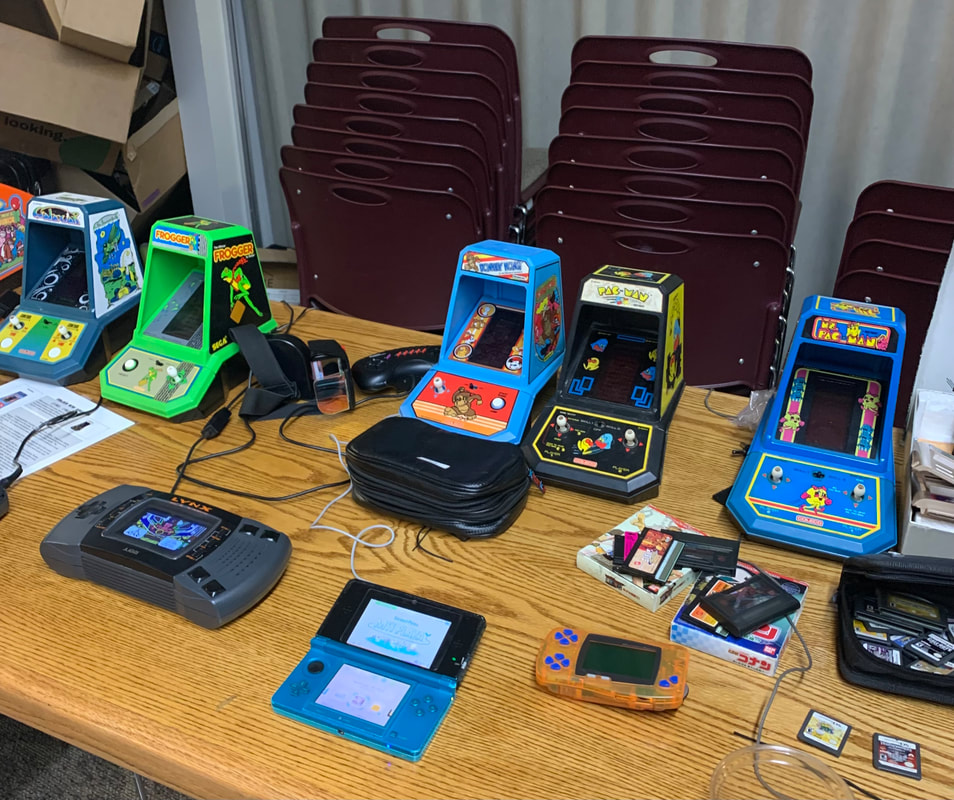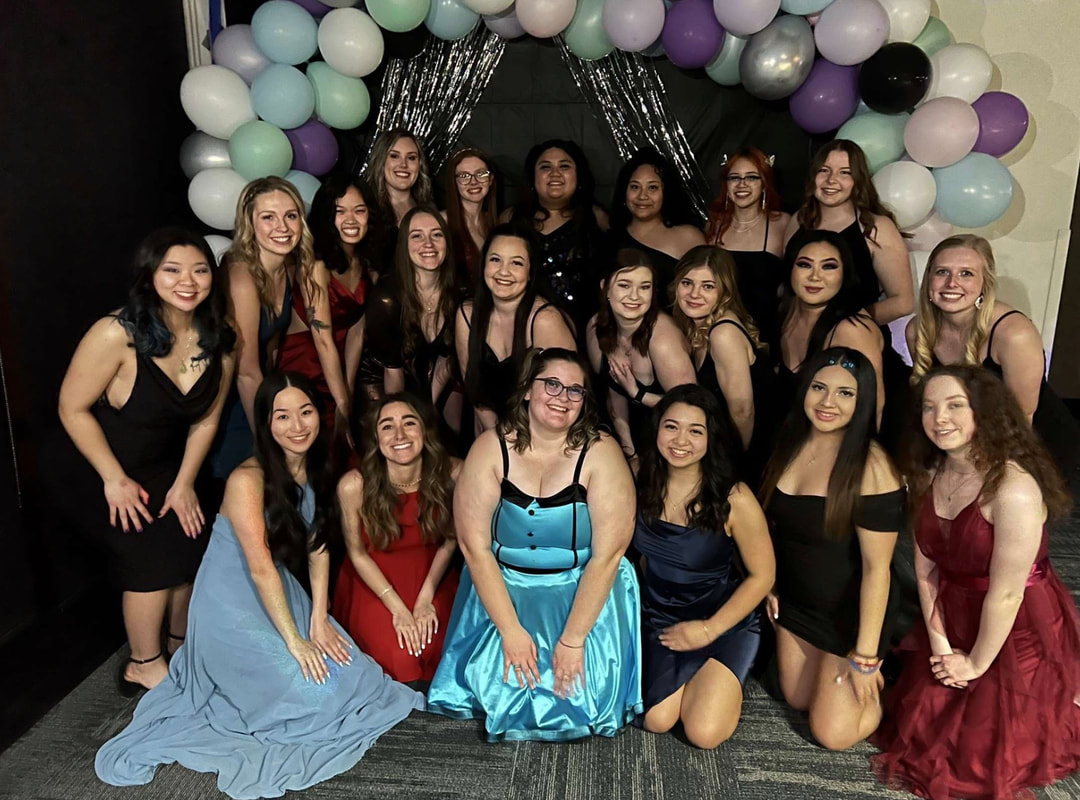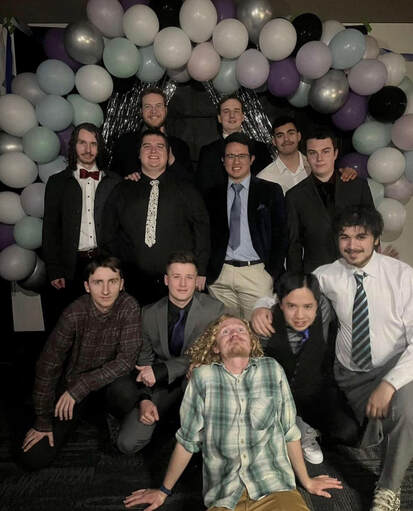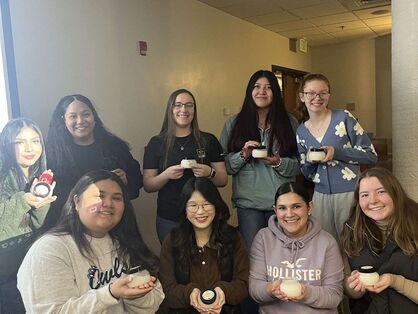 During Hootie’s Winter Wonderland, one of the events that the campus hosted was DIY Sugar Scrubs, and I was lucky enough to go. I don’t know exactly how many students were expected to attend, but it filled up very quickly and it was hard to get a hold of the supplies to make the sugar scrubs. An event like this is great considering the benefits of sugar scrubs. Sugar scrubs are a great way to naturally get very soft skin from exfoliating. Using them can also brighten and liven up your skin. Using them can make people feel relaxed, but the process of making them can also be considered relaxing, making the timing of this event great with it taking place the first week back from winter break. If you are interested in creating your own sugar scrub again or because you missed the event, this is the recipe used during the event: Ingredients
Some essential oils offer health benefits, but I chose my scent based on the smell alone. Mine is vanilla sugar cookie and I love it. It smells great, it makes me smell great, and it works really well. If the school does another event like this, you can find me there because I really enjoyed it and would recommend it to anyone that is looking for something to do.
0 Comments
 Last month held Dr. Martin Luther King Jr.’s birthday. In honor of his birthday, SIB hosted several volunteer and educational events about the impact he had on our society. MLK Jr. advocated for the equal rights of Black people by way of nonviolent protests. He led many protests to end segregation such as sitting at lunch counters that were “whites-only” and leading people in a march to city hall. Although these were nonviolent protests, the police reacted in violent ways such as by using fire hoses and dogs on protestors. MLK Jr. was even arrested and wrote a letter about his reasoning for his nonviolent demonstrations. He knew that nonviolent direct action would create tension and awareness from a community that consistently ignored and refused to address the situation (Britannica). MLK Jr. also advocated for equal jobs and wages for all low-income Americans in The Poor People’s Campaign. I attended all of the events to honor MLK Jr’s legacy and found they served for the greater good of the community. On Tuesday, there was a Meals in Motion workshop where a few other students and myself created meal bags that are provided for our student body and/or those who are experiencing food insecurity. There were two recipes and we assembled them in their respective areas. Once we were done, they were placed in buildings that were mostly frequented such as DOW, Bird Feeder, Cornett, and LRC. The next event on Wednesday was Tie-Blanket Making. This event was repeated on Friday. Students were given an opportunity to help the local community by making cozy blankets. The blankets that were made are going to be donated to local organizations around Klamath Falls for those who are in need, specifically Transitions and the Gospel Mission. On Thursday, there was an Educational Awareness workshop that educated students about MLK Jr.’s impact, his beliefs, and why it’s important to celebrate with days of service. I enjoyed this workshop because this was where I learned about The Poor People’s Campaign. Other students and myself discussed his work and why it’s so important even in today’s society. MLK Jr. Week of Service serves as a reminder to help others in need and advocate against the inequities that many people of color and low-income people face. If you missed these opportunities, there are many other ways to give back to your community. Call local homeless shelters, volunteer at the hospital, donate gently used clothing, etc. There are endless ways to volunteer your time. You don’t have to be an expert to know about all of the inequities that others face, but listening and educating yourself about them can be a stepping stone towards fighting injustices happening around us. For more information, check out these resources: https://www.britannica.com/biography/Martin-Luther-King-Jr/additional-info https://encyclopediaofalabama.org/article/birmingham-campaign-of-1963/ 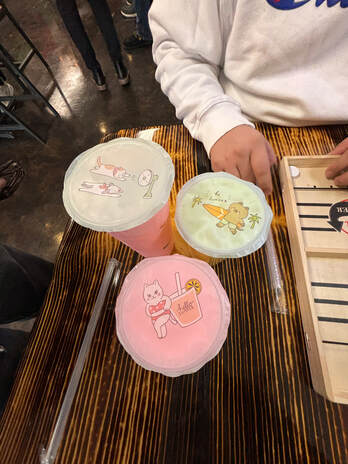 Before coming to Bubble Break Boba Bar, I had never had boba. The owners, Garrett and Jessica Steensland, decided to create an establishment for the community that wasn’t centered around alcohol and more so about building a place for people to socialize and enjoy the various drinks they offer. They had their surprise opening on January 22nd from 3pm-6pm and they had about 150 people from the community show up to their business and try out boba, bubble tea, and a variety of the other drinks they had. As I arrived, there was a long line with people ordering more than 3 drinks at a time. Once I got closer to ordering, I noticed that they had a corner of multi-colored 3D printed dragons, Pokémon plushies, yearly calendars, and apparel. They also had a small rack of ramen which they can heat up for you. Their menu ranged from bubble tea, Italian soda, and lemonade. For both the bubble tea and Italian sodas, their prices for a small is $3, $5 for a medium, and $7 for a large. The lemonade prices were similar: $3 for a small, $5 for a medium, and $6 for a large. They had a variety of bubble tea flavors that either had caffeine or no caffeine. There were also some natural flavors like Black Tea, Maui Mango, and Chai Love. A few of the dairy free flavors that were listed were almond, coconut, or oat milk. The Italian sodas and lemonade flavors had some sugar free options along with dye free and sugar free lemonade only. Lastly, but certainly not least, their Boba Pearl flavors ranged from Kiwi, Strawberry, Pomegranate, Mango, Honey, and so much more! I ordered a strawberry and coconut milk tea with Kiwi Boba Pearls. At first, I was pretty nervous to try something new because I tend to be picky. Due to the amount of orders they had at the time I arrived, it was about a 20-minute wait. Once my name was called, I saw that their cups came with cute lids on the cups. From the first sip I found it quite delicious. I enjoyed the Kiwi Boba Pearls as they added a sweet aftertaste to my milk tea. Overall, I’m glad this was my first time trying out Boba because it exceeded my expectations. Bubble Break Boba Bar is located at 1775A Washburn Way, Klamath Falls, OR 97601. They are right next to Baskin Robbins, which is about a 10 minute drive from campus — and it is well worth the drive. As of now, they’re open Mondays from 3:30pm-6pm, Tuesdays from 3:30pm-8pm, closed on Wednesdays unless they’re hosting special events, Thursdays from 3:30pm-8pm, Friday and Saturday from 3:30pm-11pm, and they are closed on Sundays unless they’re open for special events. They have small giveaways once in a while on their Facebook page: Bubble Break. Like their page to stay updated on future giveaways or more Bubble Break news! 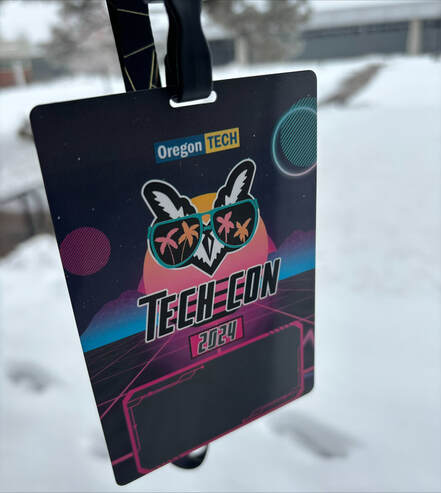 Unfortunately, this year’s TechCon did not go as planned. TechCon initially started at 12pm on Saturday, January 13th in the midst of the Winter Storm Advisory. It kept snowing heavily throughout the first hour of TechCon which resulted in only a few people showing up. At around 2pm, the school sent out an alert that the Klamath Falls campus would be closed for the remainder of the day and the entirety of the next day. This caused a lot of confusion as to what was going to happen with TechCon. The Housing and Residence Life staff communicated with each other about whether they would continue TechCon as an event for only on campus students, reschedule it, or cancel the event. Ultimately, they made a decision to close TechCon completely and announced this to a gathered crowd of attendees as well as Housing and Residence Life staff in the CU auditorium. This meant that all staff members or other persons that lived off campus were told to leave campus immediately due to the liability for the school. Many people including Kurt Liedtke, who hosted the Retro Gaming portion of the event, had to leave campus because they did not reside on campus. The economy system that allowed attendees to earn credits was removed in its entirety, so that meant that there wasn’t going to be an auction happening. All events that were a part of TechCon were provided for entertainment and not to earn credits for prizes. Sadly, a lot of the attendees left because they were looking forward to earning credits to use for auction that would’ve happened on Sunday night. To compensate for this, Housing and Residence Life staff gave away TechCon shirts for those who were there. As for the prizes that were going to be raffled off, they will be used for future Housing and Residence Life events that may happen this term and Spring term. This means that if you were looking forward to enjoying TechCon, but couldn’t attend or got sent home because of the snow, be on the lookout for events that they will be hosting in the near future! You can follow the Oregon Tech Housing and Residence Life’s Instagram: @OregonTechHousing for updates on a modified event that can make up for what TechCon was hoping to do this past weekend. Editor’s note: This article was held in anticipation of an update on a replacement event. The items purchased for the TechCon Auction will now be used at Housing's Spring Fling event in May. — B. Hoffman, Editor in Chief Although winter break is upon us, TechCon is just around the corner. You may be asking, “What is TechCon?” or when is it? As a student who’s attended TechCon for a few years now, I am here to let you in on the inside scoop.
TechCon is a convention style event that hosts smaller activities throughout the day. These activities are brought by Klamath Falls community members and Oregon Tech clubs, programs, and sponsors. The event is usually held the weekend prior to Martin Luther King Jr. Day, which is January 13th–14th from 12pm–10pm on both days. TechCon is mainly hosted in the College Union, but some events may be held in the Athletics building--TechRec. The event is open to the Oregon Tech community and the general public, so there will be a lot of people attending. This year, the entry fee for those who aren’t students is $5. Building off last year's theme of Cyberpunk, this year’s theme is 80’s Sci-Fi! Returning to TechCon this year is the event’s “banking system” in which you earn credits by attending the events within TechCon. This year’s event will have cosplay competitions, gaming events (ex: videogames/VR, tabletop/card games, casino games, parlor games, etc.), outside community member events, and thematic themes. Like last year, there will be a silent disco/rave. TechCon ‘22 ended with a Synthrave — a silent rave with multiple radio channel options that uses headphones to connect to the music — led by KTEC who provided headphones for students to listen to the music options and enjoy the atmosphere. Last year, many students worked with their friends to pool credits for the auctions held at the end of each day. One group of students even pooled all of their credits to win an Xbox Series X! It blew my mind how invested these students were, but it definitely goes to show that TechCon is an event to look forward to. TechCon is definitely an event you most definitely don’t want to miss. I heard through the grapevine that there will be many things to do during this year’s TechCon and that the auction is coming back as well. Although it seems like TechCon is far away, be ready to enjoy all the events and start Winter term off on the right foot! Every year I get asked, “What are you having for Thanksgiving?”. Everyone lists all the common American dishes that they typically eat every year, many of which are unfamiliar to me. I never even knew what stuffing was until this year. As I grew up in a Mexican household, I never ate traditional American foods for holidays like turkey/glazed ham, mashed potatoes, stuffing, or yams. Honoring our Mexican heritage is very important to my family, and we don’t follow the norm of eating Americanized food when we’re with each other.
For this year’s Thanksgiving, my family had pozole as our main dish with flan for dessert. Pozole is a traditional Mexican soup with hominy (dried corn kernels), pork, and various chiles (hot peppers). The soup is very rich in flavor, but does have a spicy kick to it. In my family, we top our pozole off with chopped cabbage, diced cabbage, and if you are like my parents, a lot of onion as well. My mom also makes a delicious sauce on the side to eat with chips, but it is eaten with caution because it is very spicy. Once we finished our main course, we ate flan. Flan is a type of custard made with eggs, sweetened condensed milk, heavy whipping cream, evaporated milk, and vanilla extract. It also has a smooth top layer of caramel. Our night usually ends off with a few rounds of Loteria. Loteria is the Mexican version of bingo. Instead of numbers being called, we call out the words that go along with the picture. To make it a bit more exciting, we play for money. We bet twenty-five cents for the first few rounds, but once it gets intense (or family members are getting ready to leave) we start betting a dollar. Now that’s when it gets really exciting! Unfortunately, I did not win the dollar bets this year, but I still had an amazing time with my family. How does your family celebrate Thanksgiving? Tell us in the comments! This past Saturday, November 11th, the Student Veterans Program (SVP) took part in the Veterans Day Parade. The parade started downtown at 10am with veterans leading the way down Main Street until they reached Veterans Park. Along the road were many members of the community who waved at the veterans to thank and honor them for what they have done by serving our country. Mazama High School had two marching bands in attendance in which they entered the parade at different intervals and played their respective songs.
Following the veterans was a lot of Oregon Tech faculty and students. As mentioned previously, SVP was in attendance along with Kappa Xi Alpha -- Oregon Tech’s Sorority, the baseball and rugby teams, various faculty members, and Hootie. Hootie kicked off Oregon Tech’s presence in the parade by riding in on a red Jeep while waving a mini-U.S. flag. Following Hootie were members of SVP holding up flags representing different branches of the military including the Army, Marine Corps, Navy, and the Air Force. Alongside SVP was Kappa Xi Alpha, the baseball and rugby teams, and various OT faculty as they marched and held mini-U.S. flags that they waved at the community members that were on the sidelines. Both the Girl and Cub Scouts of Klamath Falls were in the parade. The Girl Scouts yelled out a chant in support and appreciation for the veterans. They also thanked the veterans after they finished their chant. The Cub Scouts handed out bracelets and yelled out, “Thank you veterans for your service!”. Local businesses like the Klamath Falls Elks Lodge also participated in the parade and had children thanking veterans as well. Dutch Bros employees could be found handing out shirts to community members as they walked by. The Klamath and Lake County Shriners Club also attended the parade in support of veterans. A few other businesses from Klamath Falls took part in the parade and handed out candy for the children who were present there. Between the floats and various cars representing other groups were veterans riding in classic cars of various models and colors. Overall, this parade was meant to show all the support that this community has for their veterans who have served this country. Dia De Los Muertos is a holiday celebrated on the first and second of November. A majority of Mexico and Latin America celebrates Dia De Los Muertos as it is a tradition to celebrate the lives of our loved ones who are no longer with us. As a member of the Hispanic/Latinx community, I have celebrated this holiday every year with my family. Ofrendas, which translates to offerings, are decorated with our loved one's photos, food or drinks that they liked, flores de cempasuchil (marigolds), pan de muerto (bread of the dead), sugar skulls, and vibrant colors. The first day of Dia De Los Muertos traditionally celebrates children who have passed away, this is known as All Saints Day. The next day, the second of November, celebrants are meant to celebrate all of those who have passed away. Although it is difficult to accept that our loved ones are not with us anymore, it is a great way to celebrate their lives and bring positive energy to a topic that is seen as taboo.
To celebrate Dia De Los Muertos and inform students about our culture, a member of the Latinx club and programming assistant from Housing and Residence Life, Blake Garcia, hosted a Dia De Los Muertos event. This entailed of watching Coco, handing out pan dulce (Mexican sweet bread), and hot chocolate. If you haven’t seen it, Coco symbolizes how those from Latin American countries celebrate Dia De Los Muertos. It touches on topics of family, death, and remembering our loved ones during this holiday. This movie also allowed students to learn about a tradition that is not practiced in their culture. To celebrate across campus, ofrendas were set up in key locations. There were three on campus: DOW, College Union, and CEET. The ofrendas were created by the Latinx Club and photos of loved ones were provided by students. Locations were intentionally set up in areas where people would come across them often and provide a way for them to learn about the holiday. Dia De Los Muertos is a holiday that celebrates the lives of our loved ones in a vibrant manner. Death has always been a touchy subject for many, but this tradition keeps our loved one's memories alive and lets us remain connected with them. I recently had the opportunity to go the Klamath County Annular Solar Eclipse Festival. This event took place on the weekend of October 14, 2023, starting that Thursday afternoon, lasting all of Friday, Saturday, and ending on Sunday afternoon. During this multi-day event there were vendors, food stalls, games, contests, and camping, but the biggest attractions were the solar eclipse and a concert by Smash Mouth.
The eclipse was super cool to witness, even though it only lasted for a couple minutes. The festival was directly in the path of the eclipse, so we got to see the whole thing. As part of a welcoming gift from sponsors, everyone that attended got eclipse glasses so they could see the whole event well — and without burning their eyes. Some of the events that were held included a donut eating contest — with all the leftovers being given out to the people that didn’t participate, a costume contest for mostly kids but some whole families joined in, Bingo tournaments, and various other games for anyone to play. Camping was offered at this event because it was a three-day event, but also because it was on a large property in Chiloquin, which is located about 30 minutes outside of Klamath Falls. Plus, there was alcohol on site. The campgrounds were well planned out for the commuters and safety of everyone involved, but I think the event could have improved on things to do throughout the day. Events only took place every few hours, and you can only entertain yourself for so long with games and socializing. The best part of this festival for me was the concert. This is partially due to me just loving the atmosphere of concerts, but the music and setlist was really good as well. Smash Mouth is a group that knows how to perform, work the crowd, and they also happen to have great songs for a festival like this one. The band played for about two hours with songs like “Walking on the Sun,” “All Star,” a new song titled “Underground Sun,” classic favorite “Then the Morning Comes,” and many others. They kept their setlist sun themed and I think that was a great touch. Overall, I really enjoyed this event, and it has been one of my favorite things I’ve done in Klamath Falls. I really hope the city has more festivals like this and is willing to invest more into them so that there is more to do between big agenda items and we can keep getting big name people to make an appearance. If an event like this happens again, I will definitely be attending! This past weekend we saw a collaboration between Oregon Tech’s sorority -- Kappa Xi Alpha -- and fraternity --Phi Delta Theta -- to put on the annual Carnation Ball with the help of KTEC to DJ. This year’s theme was Euphoria, so we saw a lot of blues, purples, and sparkles, and of course we can’t forget all the lights.
This event happens at the end of Greek Week every winter and provides students with a way to let loose with friends and forget about the stress of class for a night. This year there were around 60 people in attendance including current students, alumni, and some non-Oregon Tech students. 60 is a good number but they always want more, so make sure to get yourself a ticket next year. Some people don’t go to events like these because they feel like there isn’t anything there for them. Well, that’s not the case with this dance. There’s music and dancing which satisfy most people’s interest, but there are also areas that you can go to sit in the back and just observe if that’s what you prefer. Also, if you showed up early enough you might have just been able to grab a coffee, but don’t worry if you’re late, they also had a Red Bull bar. And what kind of dance would it be without a photo booth that you can just walk up to and have the attendant take a photo of you and your group that you went with? You didn’t get all dressed up for nothing after all. With a mixture of fast and slow dances, just about everyone felt like they had a space on the dance floor, especially when the event was coming to a close and the DJs started taking requests. At that point there was almost nobody left in their seat. Those that stayed until the very end seemed like they got the most enjoyment of everyone in attendance because they got to make the playlist their own and then got to be the only ones left dancing. Overall, I would say that the Carnation Ball was a success this year and that if you didn’t get the chance to go this year, make sure you do next year. The Internet of Things (IoT) is a concept used to describe the network of devices connected to the Internet. This network includes commonly thought of devices -- such as laptops and phones -- that use the Internet frequently, and those that aren’t as commonly thought of -- such as aquarium thermometers, baby monitors, security cameras, fridges, toasters, and more. To many, the IoT might not mean too much aside from being a part of one’s life, but to a cybersecurity specialist, every IoT is a security concern. One of the best examples of this is the casino that got hacked through its fish tank thermostat.
Back in 2018, Darktrace CEO Nicole Eagan revealed hackers were able to get a casino’s high-roller database through the fish tank thermostat. She explained that once the hackers found the database they then “pulled that [database] back across the network, out the thermostat, and up to the cloud.” Unfortunately, as Eagan states, IoT devices expand the attack surface while lacking traditional defenses. More and more things are being connected to the Internet every day and unfortunately, cybersecurity hasn’t caught up with them. For some, this might not seem like a big deal. For example, many parents would like the comfort a baby monitor provides. However, many monitors today will hook up to the parent’s phones, making it an IoT device. A parent has to make a choice: add the monitor and risk hackers being able to see and talk to the baby (or another security-related issue) or go dark and hope for the best. Although this is an extreme case, it is food for thought. When choosing devices, especially ones that would be inside the house, there are important factors to consider. When deciding on what device to get, there are some tips. The first thing to consider is how necessary it is to add the IoT device and if the device can be implemented without it belonging to the IoT network. Fridges are one example. Samang offers a variety of fridges featuring a “Touch-Screen Family Hub” and an app for your phone. Although these features might be nice, they aren’t necessary for the basic function of a fridge. If one really wanted the IoT fridge they could better protect themselves by looking into the security of the fridge. For example, if its data encrypted, they should ask if it allows passwords and multi-factor authentication, and if it follows connectivity protocols. Forbes has a decent article that discusses 14 steps to secure IoT devices. Some of these steps will be more applicable to some devices versus others, but the steps are worth considering and following if possible. Although steps can be taken to prevent IoT devices from being compromised, the only true way to protect yourself is to have no (or as few as possible) IoT devices at all. At a time when students are looking for a resolution to the on-going faculty retention crisis, Oregon Tech President Naganathan failed to deliver reassurances at the February 20th ASOIT general meeting. His expounding of Oregon Tech’s historical and educational significance did not address a primary student concern—faculty retention.
In the fancily decorated Crater Lake Complex conference room--no doubt meant to match the Winter Wings fanfare around campus-- Naganathan’s talk seemed to be aimed more towards a donor audience than to the majority student audience seated before him as indicated from his talking points:
Throughout his presentation, Dr. Naganathan championed the need for Oregon Tech to publicly promote itself because “it is amazing now how many people don’t realize we are a four-year university,” he said. He urged that “everybody is an ambassador for Oregon Tech.” Complementing this view, ASOIT Chief of Students Diana Escamilla announced later that ASOIT is looking for student advocates to travel to Salem while the current Oregon State Legislature is in session. After Dr. Naganathan finished, the quiet applause from students seemed to indicate that something had been left unsaid. The colloquial elephant in the room stood out during the student question-and-answer portion. Students from the Electrical and Mechanical Engineering programs asked the President to address the loss of “hands-on” learning and program faculty. A member of the Blacksmithing Club noted that Oregon Tech’s welding shop is gone. The shop provided direct hands-on experience for engineering students. Naganathan responded that the welding program was provided in partnership with Klamath Community College, but the program is no longer active. The President also indicated that the “curriculum has changed over time” and what constitutes “hands-on” has been redefined. “We don’t want to take hours and hours to graduate [students]” so opportunities for hands-on learning have now shifted to industry. An Electrical Engineering student stated that his program “lost four faculty members” which caused issues within the program. Naganathan addressed faculty hiring by stating, “We are actively working” to replace the lost faculty but added that hiring “has to be owned by the departments.” Student Graeme Wiltrout, asked, “What are we doing to prevent faculty from leaving?” Naganathan stated that “we need to create ways” to innovate so faculty become invested in the programs and want to come here. New faculty members bring their innovation with them when they join Oregon Tech. |
Proudly powered by Weebly

